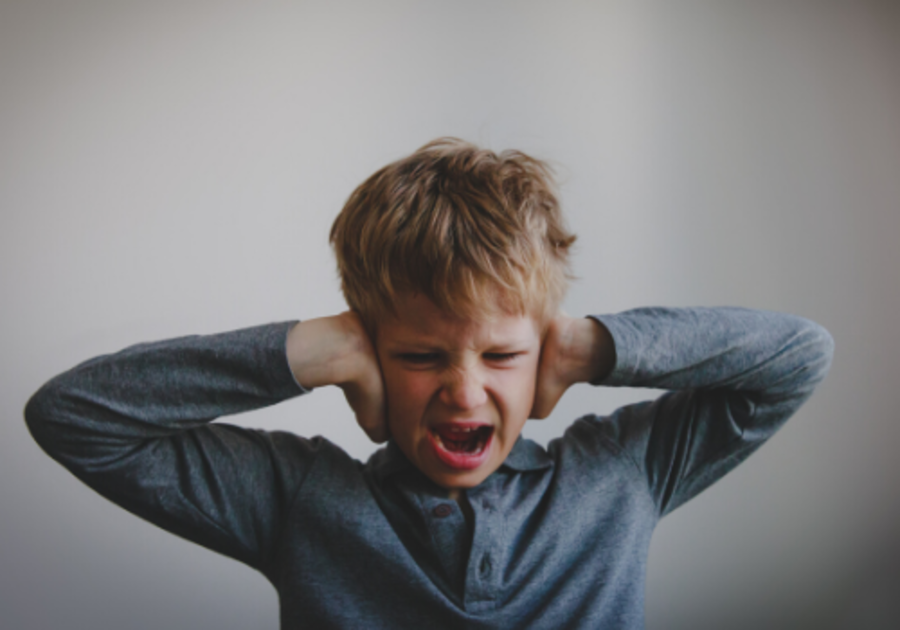Anxiety is an emotion characterized by unease over uncertain outcomes. It is an emotion that indicates one’s needs aren’t being met. Since children lack the full capacity to understand and process uncomfortable emotions due to their developing pre-frontal cortex, anxiety is often shown through outward expressions of clinginess, sadness, excessive worrying, distrust and even anger. Your child may complain of unusual headaches, body aches or stomach pains. You may find that you can’t reason with your child when they are feeling anxious.
Anxiety can cause your child to shut down, avoid favorite people, places, activities or even pick fights. So as a parent, it can be challenging to know exactly what is going on with your child. Many parents wonder, “Why does my child do that?”
If you are noticing 2-3 of the above characteristics are negatively affecting relationships, chances are your child is getting stuck and needs some guidance to move forward.
I was one of those parents. First, as a child, I experienced anxiety both at home and in school. The adults around me simply labeled it as being a perfectionist. It wasn’t until years later that I actually was able to label anxiety as the emotion I was having difficulty managing. My own children also have varying degrees of anxiety.
Last week, in fact, my youngest began to have a panic attack as she was getting ready for school. Once she realized that her brothers had left the house without her, she fell to the floor and began to scream and kick her feet. She threw her backpack and told me that I was a stupid mom.
What was going on here? Well, she was experiencing anxiety over her perception that her brother’s left without her. She immediately went into a fight mode. She was, however glued to the floor, unable to use her thinking brain to move forward and get out the door.
Here are 3 ways that I used to help her. You too can employ these strategies to help your child when you suspect anxiety.
1) Model CALM and ALERT - Even more than the words you say, your child is imitating your actions. You, as the parent, need to create an environment with energy that you would like to see mirrored by your child. It may not change everything in an instant, but doing the opposite will only create more chaos. It is the perception of danger that pulls your child into a state of FLIGHT, FIGHT, FREEZE or FAINT. In my daughter’s case, I could have blown up at her. I could have yelled, in hopes that she would move faster and get out the door, but I know that this would have only caused her to cry and scream more. So instead I stayed calm and helped her get to the next step.
2) In these moments of stress and anxiety, it is our sympathetic nervous system that is activated. Fast heart rate, shallow breathing and a sense that your child is in danger. In order to help my daughter move out of this panic mode, I walked her through a breathing exercise. There are many different breathing techniques available and you may need to experiment with a few of them to learn what feels comfortable for your child. The Hand Tracing technique is one of my favorite breaths to do with kids as young as 3 years old.
You can watch the Hand Tracing Breath video here.
Hand Tracing Breath Instructions
Have your child sit on the floor with you and place both hands on the floor. Your child should be supporting at least some of his/her body weight through the arms. Next ask the child to spread apart the fingers so you can trace his/her hand. Slowly trace up and down each finger, modeling a nice slow breath up the finger and slow, audible exhale down the finger. When you finish all 5 fingers. Try the other hand, but this time ask your child to breathe with you. Breathe in up the length of the finger and exhale out as you trace down the length of the finger. When you notice your child is using slow breaths, compliment him/her and draw their attention to the sense of calm you see. Ask your child if he/she is sensing any feelings. Focus on ensuring your child can recognize the calm feeling. Repeat as needed!
3) When your child leaves the “Calm and Alert” state, he or she automatically enters a state of perceived danger. This happens too for adults, but we have the advantage of a more developed pre-frontal cortex. Using our “Wizard brains” comes naturally for adults. As a child, they are still developing the “Wizard brain”. Often we as parents need to help bring awareness to the fact that they are safe and not in danger. Help your child identify what they need right now to realize they are actually safe. For my daughter, she ultimately needed to know that her brothers did not actually leave for school without her. It is true that they left the house, but when I brought her over to the window, she was able to see that they were right there waiting for her. Later on that day, when she was calm and alert, we talked about what she could do differently the next time. She agreed that she was scared they had left and that the screaming and kicking that she was doing, really was not helping her get to what she needed.
Here is a link to a few useful tools for identifying anxiety in your child.
When talking with your child about his/her feelings be prepared for a variety of reactions. Most likely, your child will have some strong reaction to your conversation. Your child may not be receptive at first. As a parent, you may feel like this isn’t working and feel discouraged or even angry that you are not able to reach your child. It is very important that you, as the adult, recognize your emotions. Allow the emotion to run through the cycle, which according to Joan Rosenberg in 90 Seconds to a Life You Love, is the amount of time the neurotransmitters are active in your body. Then you can take action and decide what this anger or frustration is telling you.
The actual conversation with your child may need to look different than how you imagine it going. You already know that your child is suffering with anxiety and is unable to move through the emotion well. Each time your child meets the stimulus a sense of overwhelm may come over your child. Your child can experience a number of different stimuli here are a few common examples of different stimuli: being in class, the thought of going to school, the worry about getting in trouble or the worry that he/she will disappoint you or the teacher. Logically, you may recognize that this fear is not a real fear, but for your child it is. These thoughts are your child’s current reality.
You CAN reach your child. You just need to find that “just right” balance as the entry point. Where is your child most often in a calm and alert state? What activities does he/she like doing? Does your child typically respond well to words of affirmation or perhaps when you do something for your child? Just like when solving a math problem, you can start out with what you know.
Once you have your child in that calm state, ready to listen and learn, you can begin to talk about things you are noticing and asking your child if you are accurate in your observations. Once you have made this initial connection, you will be able to work on 1 worry or concern at a time. If your child has a difficult time talking, try using a Share Journal, or even have your child text you his/her thoughts.
If you are looking for more guidance with anxiety in your child, keep an eye out for Part 2 and 3. Also there are 2 FREE upcoming seminars.👇🏻👇🏻👇🏻👇🏻
Sweet Pea Pediatric Wellness Upcoming Classes
- “A” is for Anxiety, event for parents to help their kids @ Golden Library ~ Golden: The in-person event is scheduled for Monday December 16th, 6:30-7:30pm at the Golden Library, 1019 10th Street, Golden, CO
- "A" is for Anxiety - Parenting Webinar (Online) With Sweet Pea Pediatric Wellness: FREE online webinar Wednesday, November 27th 7:30-8:30pm. Register for the events using this link.
| |||
Share the Love - Be sure you tell them Macaroni Kid sent you... and tell all your friends!
Macaroni Kid Arvada, Golden and Wheat Ridge is a free local calendar, weekly e-newsletter and website focused on fun family events and information in the area. We gather all kinds of local family events and activities each week, and add useful information about classes, family-focused local businesses, book and product reviews, recipes, crafts, school and camp guides and more.
Quick links to learn more about our community:
 |  | |||
 |  |  |






